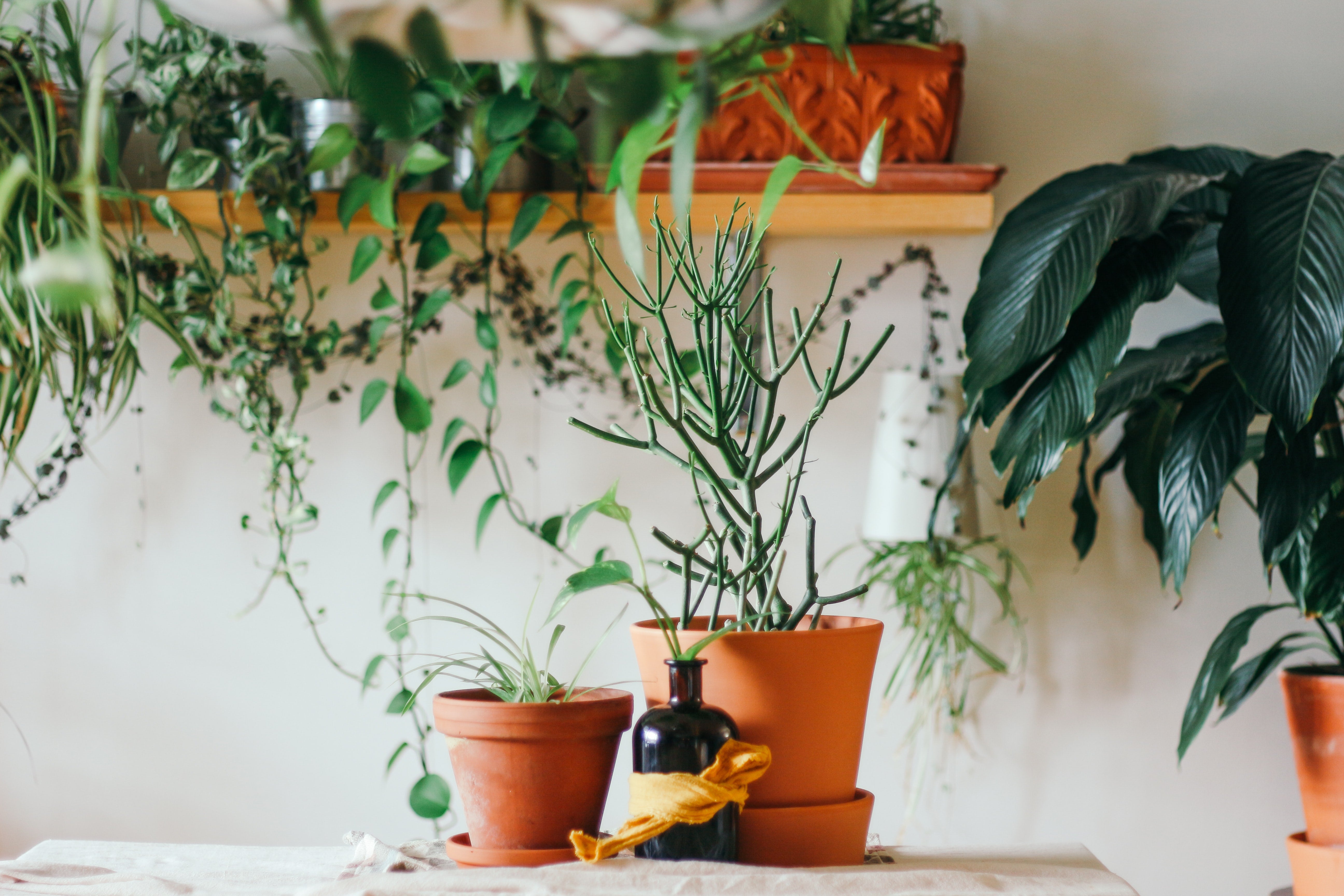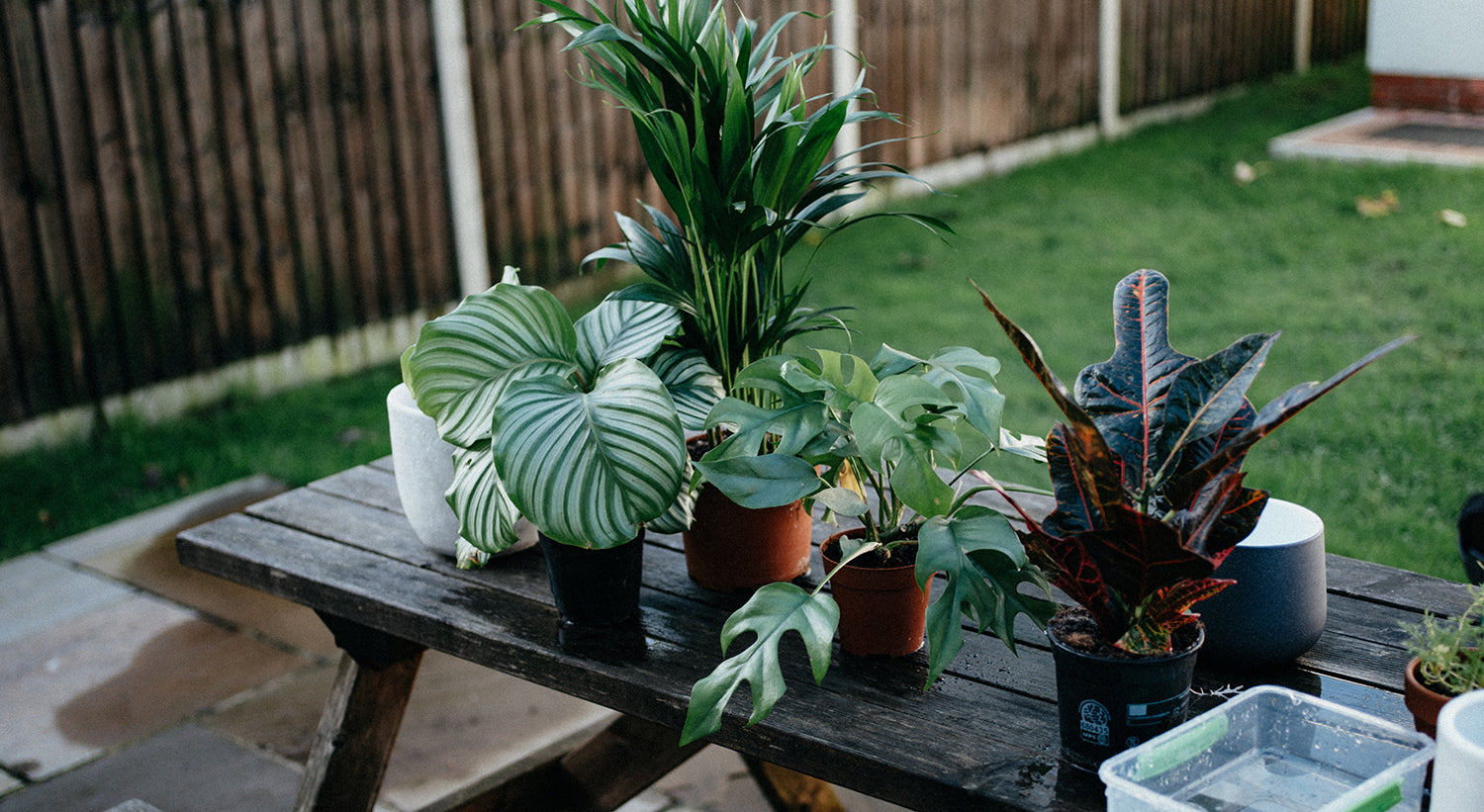
How to Repot Your Houseplants
It's about that time, your plant has overgrown its current planter and needs to be repotted. While this may sound like a haunting task, with a few tips, your plant will be sitting happy in its new planter.
How do you know when it's time to repot? If you notice houseplant is doing any of the following (or a combination), it's time to repot.
- Roots are overflowing out of the top of your current planter.
- Your plant has stopped growing, or is growing slower than usual.
- Salt or minerals are beginning to build up on the plant or pot.
- Your plant is drying out quicker than usual and needs more frequent watering.
- You see roots coming out of the drainage hole at the bottom of your planter.
- A top-heavy plant that is falling over.

Step to repotting your plant:
1. Removing
Gently turn your pot over while holding onto your plant until it falls out. You may need to tap the pot or gently pull on the plant to help loosen it from the pot.
2. Pruning
With a sharp knife or scissors, remove any mush, dead, or excessively long roots. If you plant is root-bound, break up the roots to help your plant continue to grow.
3. Repotting
Fill your new planter 1/3 full of fresh potting soil then place your plant in the center of the pot. Fill the rest of the pot with soil completely covering your plants roots.
4. Watering
Gently water your repotted plant until the soil is moist. If you want your plant to grow faster, try using our organic houseplant fertilizer.

Bonus tips to follow when repotting your plant:
- Use a planter that's roughly 2"-3" larger in diameter than your current plant.
- Avoid packing the soil too tight in its new pot. The plants roots need room to spread out and settle in.
- Typically, you plants should be repotted every 1-2 years. This can differ depending on how quickly your plant is growing.
Was this post helpful? Click the share buttons below!



Leave a comment
This site is protected by hCaptcha and the hCaptcha Privacy Policy and Terms of Service apply.